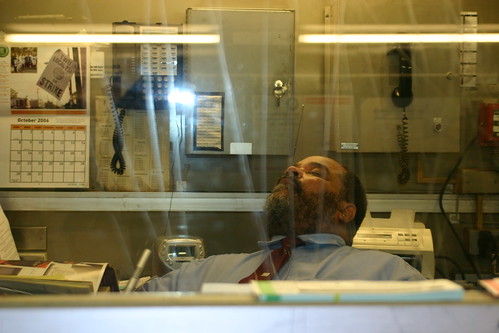 When NYC Transit President Howard Roberts and I sat down to talk last month, I started off by asking him about the Rider Report Cards. As a pilot program, I thought they had a relatively successful debut. While the results weren’t surprising, they did help New York City Transit focus its priorities in its efforts at improving subway service.
When NYC Transit President Howard Roberts and I sat down to talk last month, I started off by asking him about the Rider Report Cards. As a pilot program, I thought they had a relatively successful debut. While the results weren’t surprising, they did help New York City Transit focus its priorities in its efforts at improving subway service.
As we discussed those initial results, I eventually asked him why he was engaging in a second round of report cards so soon after the first ones. While the 7 and L, with the pilot line manager program in place may show some improvement, I opined, would any of the other lines really see their grades go up? If anything, people are more disgruntled with the subways this year as they had to suffer through a fare hike with relatively few service increases.
In response, Roberts defended his Rider Report Card program. It’s a part of the new management system, he explained, that is responsive to the needs and wishes of the customers. Instead of operating in a top-down environment in which MTA officials dictate the needs of the subway, the customers get to express their views on the trains. While I wondered if New Yorkers would be willing to go through the process again, I believe that Roberts has a voice. By routinely asking people what they want and then responding to those desires, the NYC Transit is empowering its riders more than it ever has in the past.
Yesterday, the agency released its first set of results for the second round, and as expected, changes in the grades were minimal. The L, which last year pulled down a C, managed a C-plus this time while the 7 saw its grade stay steady from a C-minus to a C-minus. Small improvements to be sure, but improvements nonetheless.
For the most part, the individual trends were encouraging. The L train saw minimal delays (C in 2008, C- in 2007) and reasonable wait times (C+ in 2008, C in 2007) improve by a grade over 2007’s report cards. In fact, in no category did the L decline in performance. Still riders rate adequate room on board at rush, minimal delays during trips and reasonable wait times between trains as their top three priorities. Those rankings are unchanged.
On the 7 line, where the focus has been on cleanliness, the grades have risen. Trains are cleaner; announcements are easier to hear. But riders complained about more delays during trips (D+ in 2008, C- in 2007) and reasonable wait times between trains (C-minus in 2008, C in 2007). Delays, adequate room and reasonable wait times were the top three complaints.
These results are hardly a surprise, and it shows that NYC Transit still has a lot of work cut out for itself. But for now, it seems as though the Line Manager program is an early success. How far the grades can raise may depend on external forces — more money, updated technology that can allow for more trains, more subway lines — but what’s in place right now is working, albeit slowly and very, very incrementally.
As an interesting sidebar, numbers were way down, and the scientific validity of these samples still raise some eyebrows. For the 7 train, the MTA received only 4113 report cards, just 26 percent of 2007’s total, and on the L line, the agency 2216 cards, down about 45 percent from last year. The MTA Board was somewhat critical of the polling methods, as The Times’ William Neuman reported last night.

 It was just a week and a half ago that the Transit Workers Union promised
It was just a week and a half ago that the Transit Workers Union promised 











 Lost in the discussion about East River tolls and congestion pricing is the great irony of the MTA. Since the tolled bridges into and out of Manhattan are such cash cows, New York City’s public transit network is kept afloat by the same forces many public transit advocates would like to limit.
Lost in the discussion about East River tolls and congestion pricing is the great irony of the MTA. Since the tolled bridges into and out of Manhattan are such cash cows, New York City’s public transit network is kept afloat by the same forces many public transit advocates would like to limit.  How do tabloids in New York sell papers? By splashing a MetroCard and a $3.00 price tag across the front page.
How do tabloids in New York sell papers? By splashing a MetroCard and a $3.00 price tag across the front page. We’ve talked a lot about money this week, and with Richard Ravitch’s report due in less than three weeks, we’ll be hearing more about the MTA’s fiscal woes well into December.
We’ve talked a lot about money this week, and with Richard Ravitch’s report due in less than three weeks, we’ll be hearing more about the MTA’s fiscal woes well into December.